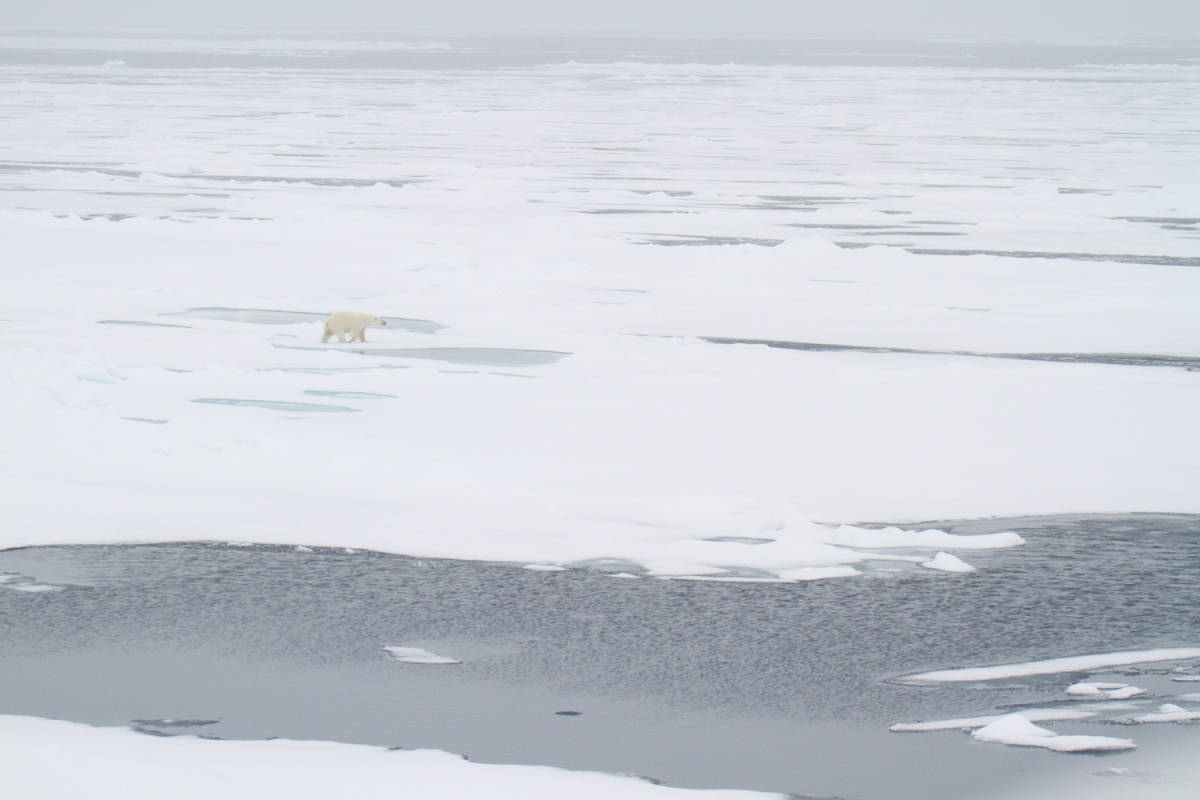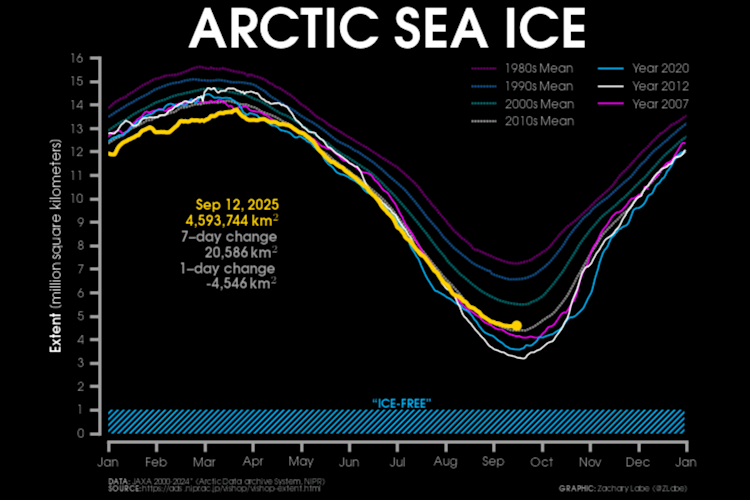Why do these projections differ so much? An important component is that we don’t know what humans are going to do. How much greenhouse gases will we emit in the coming decades? Climate scientists look at different plausible scenarios to get a sense of what happens if we continue to increase emissions or start to rapidly decrease them. Another component is that different climate models warm by different amounts even in response to the same amount of greenhouse gases. For instance, one of the main reasons projections differ is due to how climate models represent clouds and ocean heat transport, which have been shown to determine how fast and how much the Arctic warms in the future.
However, there is also some uncertainty on how sensitive Arctic sea ice itself is to warming. For a given amount of warming, different climate models predict different amounts of sea ice loss. Fortunately, we have now over 40 years of satellite-based measurements of both Arctic sea ice and temperature, allowing scientists to estimate this temperature sensitivity from observations directly: for every 1°C (1.8°F) of warming, the Arctic sea ice shrunk by about 800,000 km2 (about 300,000 square miles or the combined size of Texas and New Mexico).
It turns out that most climate models show a weaker temperature sensitivity than observed – in other words, they underestimate how vulnerable sea ice is to warming. Two recent studies, by Bonan et al. (reported on here) and Kim et al., have used this insight to provide updated predictions of when the Arctic will be ice-free: both predict it to happen about 10 years earlier than we thought based on the climate models. The Kim study, published this year, made headlines for concluding that an ice-free Arctic is now inevitable, even under the most optimistic emissions scenario. It’s important to understand that they found individual years to dip below the “ice-free” threshold of 1 million km2, not that the sea ice disappears completely to never return. Still, this is an alarming result suggesting we have less time than we thought to prevent this profound transformation of the Arctic ecosystem.
The story has another twist, though. A new study by Topal et al. found that up to half of the sea ice decline over the past 40 years might have just been due to an unfortunate sequence of wind patterns that favored breaking up and melting sea ice. This leaves a smaller part of the sea ice loss to be explained by warming, meaning the temperature sensitivity discussed before is actually lower than we thought. Just like the other studies before, the researchers then used this insight to refine predictions of future sea ice demise and concluded that an ice-free Arctic will be reached 10 years later than we thought before.
Clearly, there remains some debate on when exactly we will for the first time see an ice-free Arctic. Further research will try to reconcile these two findings in the hope to better understand the fate of the Arctic sea ice. Importantly, there is no debate on what could prevent such a scenario altogether: rapid and sustained reductions in greenhouse gas emissions. Historically, humans have survived in the face of uncertainties not by gambling on the best possible outcome but by heeding warnings and taking risks seriously. It should be no different with climate change.
Dr. Flavio Lehner is chief climate scientist at Polar Bears International and an assistant professor in Earth and Atmospheric Sciences at Cornell University.


















